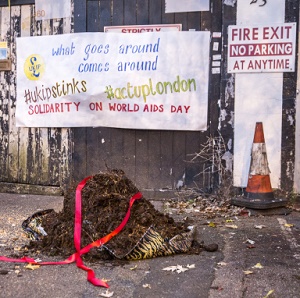Many people have an individual reason for wearing the Red Ribbon but it is generally understood as a symbol to demonstrate awareness and support for people living with HIV and AIDS.
The Red Ribbon first appeared in 1991, the result of the shared ideas of a group of New York artists who had gathered to discuss a new project for Visual Aids (a New York arts organisation that raises awareness of HIV). It has since come to be arguably one of the most recognised symbols of the late 20th century.
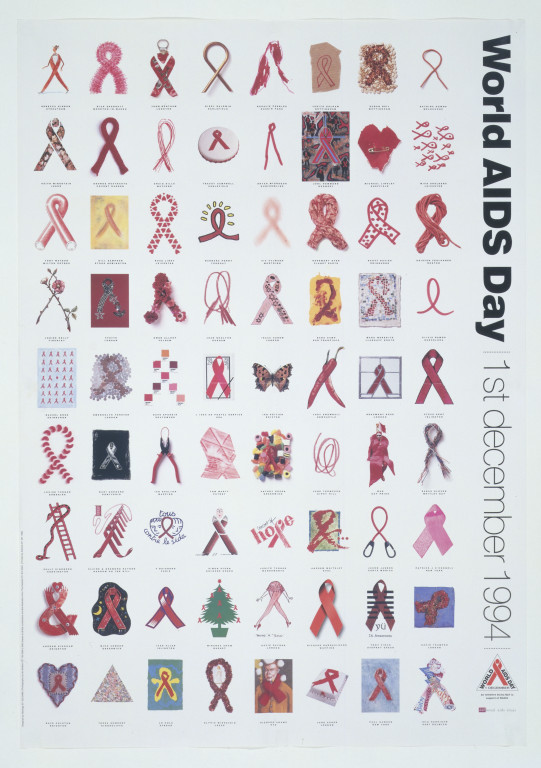
In contrast to the designs featured in my last post, which were created for the purpose of mass-communication of information to the public, the Red Ribbon originated with the aim to visually express an individual’s compassion for people living with, and affected by, HIV. In other words, it was not a communication tool of a government, advertising agency, campaign, or other groups communicating at the individual, but rather an expression of the individual’s personal sentiment.
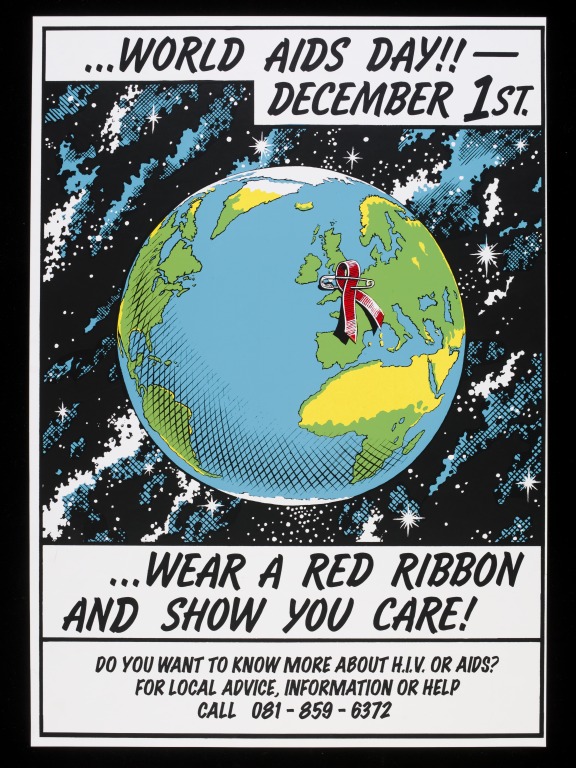
The New York artists wanted to encourage people to talk about HIV, at a time when it was highly stigmatised. The use of a ribbon was apparently inspired by the yellow ribbons tied on trees to show support for the US military fighting in the Gulf War. Ribbons have been appropriated as symbols of remembrance for a number of causes over time. For those who like their technicolour Westerns, this might also conjure up the well-known film ‘She Wore a Yellow Ribbon’ and the song which includes the lyric “When I asked her, Why the yellow ribbon? She said, It’s for my lover who is far far away”.
The colour red was chosen for being bold and visible – in addition to it symbolically representing ideas of passion, heart and love. Pink and rainbow colours purposely weren’t selected because of their close association with the gay community and the artists’ wanted to convey that HIV went beyond the gay community and was relevant to everyone.
The ribbon’s simple shape was chosen because of how easy it is to make and replicate. The artists wanted to ensure that the symbol they created was copyright free, its purpose was to be ‘a consciousness raising symbol, not as a commercial or trademark tool’.
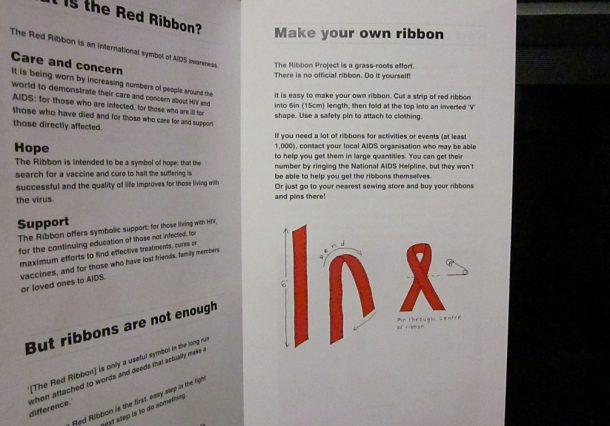
The artists themselves initially distributed the ribbons, dropping them off at theatres and other places in the New York art scene. They were originally accompanied by an explanatory text, explaining the ribbon’s symbolism, but this was abandoned once their meaning became well known.
The Red Ribbon was first most notably worn in the UK by fans attending the Freddie Mercury Memorial concert at Wembley Stadium in November 1991, where 100,000 red ribbons were given out at the turnstiles, as a symbol of AIDS awareness. The concert was broadcast live on television and radio to 76 countries around the world.

The simple shape of the ribbon continues to be used around the world as visual shorthand for support of those living with HIV and AIDS.
Although now closely associated with World AIDS Day, the Red Ribbon can be worn everyday of the year.
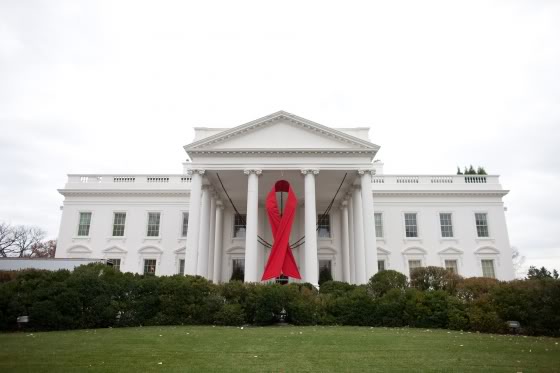
To end with something topical (and somewhat controversial), the Red Ribbon motif was recently employed by the group ACT UP. Combined with a pile of horse manure, it was part of a protest action in response to comments made by UKIP members advocating a ban on people living with AIDS immigrating to the UK. Activist Dan Glass commented: “We’re marking World AIDS Day by saying we’ve had enough. UKIP think they can spout filth without any consequences to them, but their lies directly impact millions by promoting stigma … We wanted to show Farage that people living with HIV aren’t going to take his B.S. any longer – so we’ve returned it.”
